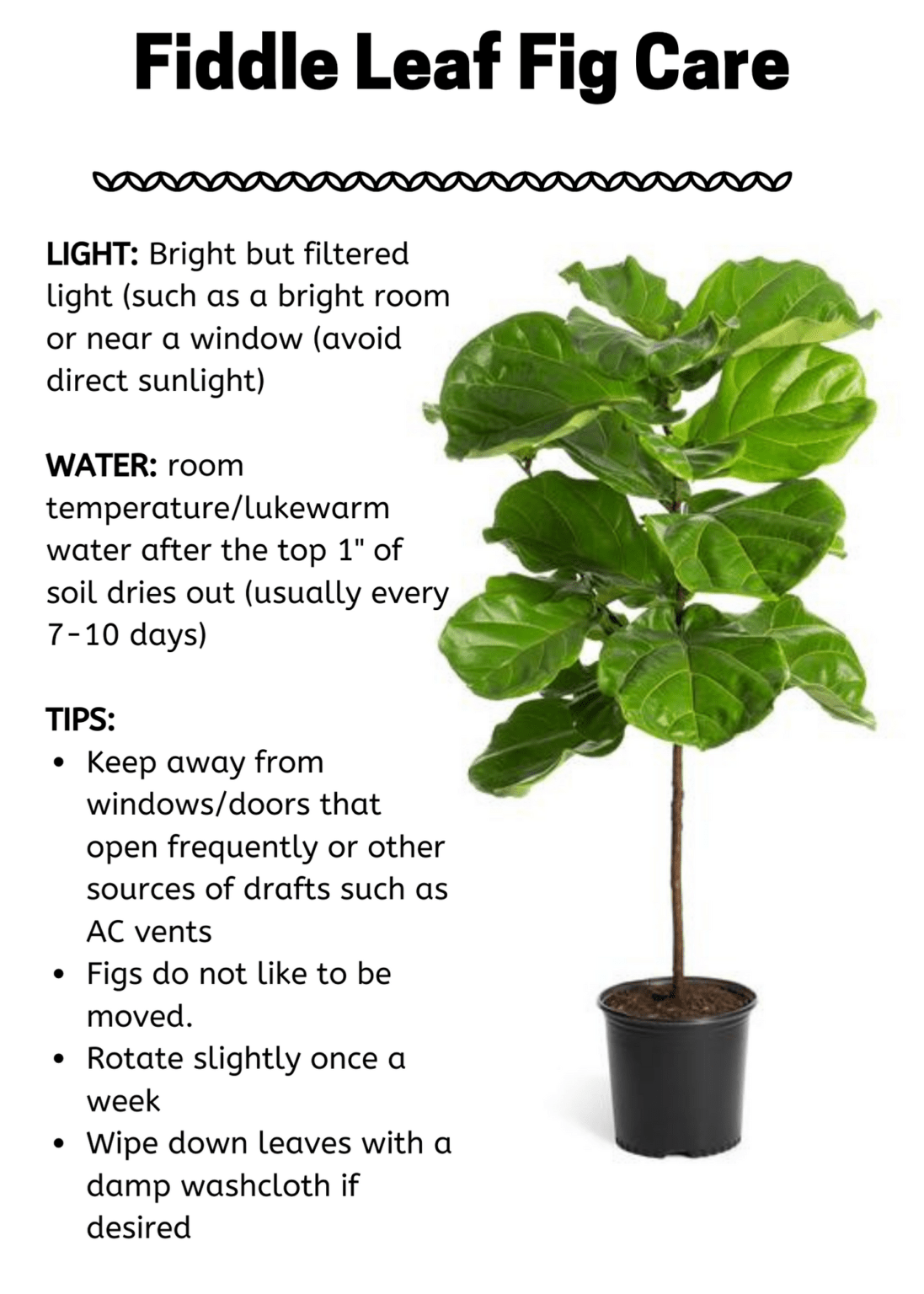
Source evergreenofjc.com
Welcome to our comprehensive guide on fiddle leaf fig care! If you’re a plant enthusiast or looking to add an elegant touch to your indoor space, the fiddle leaf fig (Ficus lyrata) is a popular choice. In this article, we will provide you with all the information you need to ensure the health and vitality of your fiddle leaf fig. From proper watering techniques to ideal lighting conditions and troubleshooting common issues, we’ve got you covered. Let’s dive in and learn how to keep your fiddle leaf fig thriving!
1. The Best Environment for Your Fiddle Leaf Fig
Optimal Lighting Conditions
Proper lighting is crucial for the well-being of your fiddle leaf fig. These tropical plants thrive in bright, indirect light, simulating their natural habitat. Place your fiddle leaf fig near a window with filtered sunlight. Avoid direct sunlight as it can scorch the leaves. If you don’t have a suitable location, you can also use artificial grow lights designed for indoor plants.
Suitable Temperature and Humidity
Fiddle leaf figs prefer average to warm temperatures ranging between 60-75°F (15-24°C). Avoid exposing them to cold drafts or sudden temperature fluctuations. Maintaining a humidity level of 30-65% is beneficial. You can increase humidity by misting the leaves regularly, placing a tray of water nearby, or using a humidifier.
Well-Draining Soil and Pot Selection
Choosing the right soil and pot plays a significant role in the healthy growth of your fiddle leaf fig. Ensure that the pot has drainage holes to prevent waterlogging. A well-draining potting mix rich in organic matter, such as a blend of peat, perlite, and bark, allows proper root aeration and moisture regulation.
2. Watering Strategies for Fiddle Leaf Figs
The Importance of Consistent Moisture
Maintaining proper moisture levels in the soil is essential for the overall well-being of your fiddle leaf fig. While it’s important not to overwater, it’s equally crucial to avoid underwatering. Consistency is key! The top inch of the soil should be allowed to dry between waterings, but not completely dry. Remember to adjust your watering frequency based on factors such as temperature, humidity, and the size of your plant.
Watering Techniques and Sign of Thirst
When watering your fiddle leaf fig, ensure that you provide a thorough soak until water drains out. This helps prevent the accumulation of salts in the soil. Signs that your fiddle leaf fig needs water include drooping leaves, a generally wilted appearance, or if the top inch of soil feels dry to the touch.
Water Quality and Avoiding Overwatering
Using filtered or distilled water is recommended to prevent the accumulation of excess minerals in the soil. Overwatering can lead to root rot and other detrimental conditions. Always check if the soil is dry before watering and adjust accordingly.
3. Fertilizing and Pruning Your Fiddle Leaf Fig
Appropriate Fertilizing Techniques
Regular fertilization is necessary to supply essential nutrients to your fiddle leaf fig. During the growing season (spring and summer), use a liquid fertilizer formulated for houseplants once a month. Follow the package instructions carefully to avoid overfertilizing, which can harm your plant.
Benefits of Pruning
Pruning your fiddle leaf fig serves multiple purposes. It helps maintain its desired shape, promotes bushier growth, and eliminates any damaged, diseased, or dead foliage. Use clean, sharp pruning shears to make precise cuts at a 45-degree angle. You can also propagate new fiddle leaf figs using the cuttings!
The Importance of Regular Cleaning
Dust accumulation on the leaves can hinder photosynthesis and negatively affect the health of your fiddle leaf fig. Wipe the leaves gently with a damp cloth or give them a shower using lukewarm water every now and then. This promotes proper respiration and enhances the plant’s attractiveness.
4. Fiddle Leaf Fig Care: A Breakdown of All You Need to Know (Table)
| Aspect | Technique |
|---|---|
| Lighting | Bright, indirect light |
| Temperature | 60-75°F (15-24°C) |
| Humidity | 30-65% |
| Soil | Well-draining mix with organic matter |
| Watering | Slightly dry top inch of soil between waterings |
| Fertilizing | Once a month with a houseplant liquid fertilizer |
| Pruning | Remove dead, damaged, or diseased foliage |
| Cleaning | Wipe leaves with a damp cloth or gently shower |
Frequently Asked Questions (FAQ) About Fiddle Leaf Fig Care
Q: How often should I water my fiddle leaf fig?
A: Water your fiddle leaf fig when the top inch of soil feels slightly dry to the touch. Adjust the frequency based on factors like temperature and humidity.
Q: Should I mist my fiddle leaf fig’s leaves?
A: Misting can help increase humidity but isn’t essential. Monitor the humidity levels and mist if necessary, especially in dry environments.
Q: Why are the leaves of my fiddle leaf fig turning brown and crispy?
A: Brown and crispy leaves are often a sign of underwatering or inconsistent watering. Ensure that you water your plant adequately and maintain consistent moisture levels.
Q: Can I place my fiddle leaf fig outdoors?
A: Fiddle leaf figs are primarily indoor plants. While they can tolerate some outdoor time in shade or filtered sunlight, direct sunlight and extreme weather conditions can be detrimental.
Q: How can I encourage my fiddle leaf fig to grow bushier?
A: Pruning your fiddle leaf fig regularly promotes bushier growth. Trim the top of your plant to encourage branching and remove any leggy growth.
Conclusion
Caring for your fiddle leaf fig involves providing the ideal environment, maintaining proper watering techniques, fertilizing, pruning wisely, and ensuring cleanliness. Remember to observe and adapt your care routine based on the specific needs of your plant. With the right attention and care, your fiddle leaf fig will reward you with lush green foliage, making it a stunning addition to your indoor space.